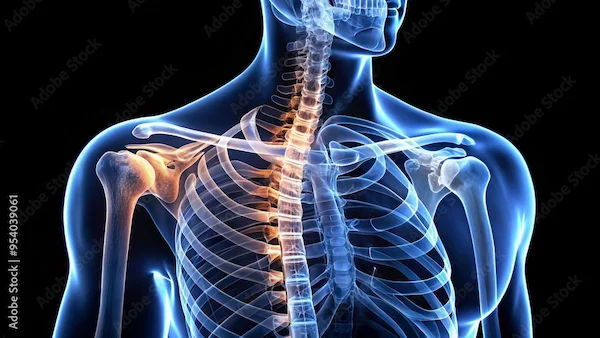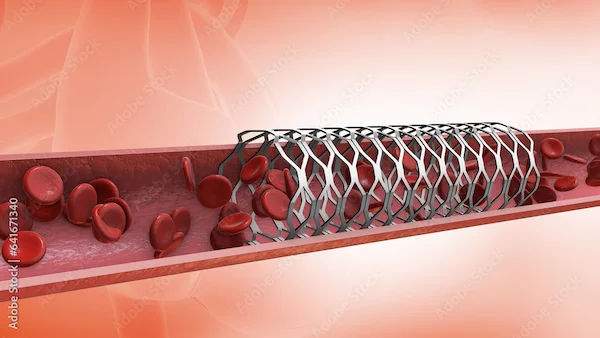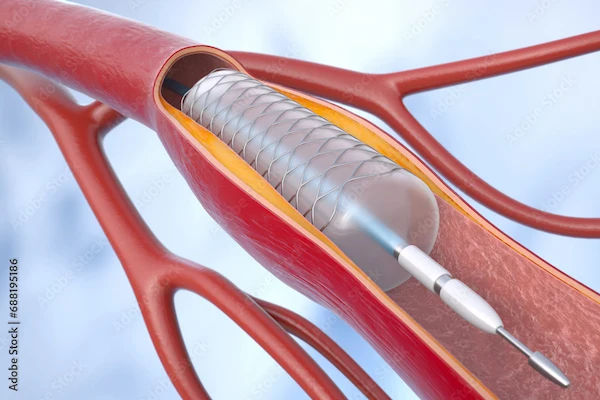Healing Of Sternum After Bypass Surgery
Understand the process of sternum healing after open-heart bypass surgery. Learn what to expect during recovery, how to care for your incision, and tips for safe movement.

Written by Dr.Sonia Bhatt
Last updated on 20th Jul, 2025

Introduction
Undergoing bypass surgery is a major step toward better heart health, but the recovery process—especially the healing of your sternum (breastbone)—requires patience and care. If you or a loved one has recently had bypass surgery, you may have questions about how the sternum heals, what to expect, and how to support the process.
This guide will walk you through everything you need to know in simple, easy to understand terms.
What Happens to the Sternum During Bypass Surgery?
During coronary artery bypass graft (CABG) surgery, the surgeon makes an incision in the middle of the chest to access the heart. The sternum is then carefully cut open (a procedure called median sternotomy) to perform the surgery. After the procedure, the bone is secured back together using special wires or sometimes plates to help it heal properly.
Since the sternum is a weightbearing bone that protects your heart and lungs, its healing is crucial for a full recovery.
How Long Does Sternum Healing Take?
The sternum typically takes about 6 to 8 weeks to heal significantly, but complete healing can take 3 to 6 months, depending on factors like:
Your overall health
Age
Nutrition
How well you follow postsurgery care instructions
Stages of Healing:
1.First 2-4 Weeks:
The bone begins to knit together.
Pain and discomfort are common but should gradually decrease.
You’ll be advised to avoid heavy lifting or straining.
2. 4-8 Weeks:
The bone becomes more stable.
Light activities can be resumed, but strenuous movements should still be avoided.
3. Beyond 8 Weeks:
Most patients can return to normal activities, but full strength may take longer.
Some may still feel occasional discomfort, especially with deep breaths or sudden movements.
Common Symptoms During Sternum Healing
It’s normal to experience some of the following as your sternum heals:
Pain or tenderness (especially when coughing, sneezing, or moving)
Clicking or popping sensations (due to the wires holding the bone)
Swelling or bruising around the incision
Tightness in the chest
Consult Specialists For personalised Tips
When to Worry:
While some discomfort is expected, contact your doctor immediately if you notice:
Severe, worsening pain
Clicking or shifting of the bone (could indicate improper healing)
Redness, pus, or fever (signs of infection)
Difficulty breathing
Tips for Faster and Safer Sternum Healing
The tips for a faster and safer sternum healing are:
1. Follow Your Doctor’s Instructions
Take prescribed pain medications as directed.
Avoid lifting anything heavier than 5-10 pounds for the first 6-8 weeks.
Use a sternum pillow when coughing or sneezing to reduce pain.
2. Practice Good Posture & Movement
Avoid sudden twisting or pulling motions.
Sleep on your back (avoid sleeping on your side or stomach initially).
Use your arms carefully—push up from a chair using your legs, not your arms.
3. Eat a Healing Friendly Diet
Proteinrich foods (eggs, lean meat, beans) help bone repair.
Calcium & Vitamin D (milk, yogurt, leafy greens) strengthen bones.
Stay hydrated to help with overall recovery.
4. Gentle Exercises (As Advised by Your Doctor)
Deep breathing exercises prevent lung complications.
Short walks improve circulation and healing.
Avoid strenuous workouts until cleared by your doctor.
5. Watch for Complications
Infection: Keep the incision clean and dry.
Nonunion (delayed healing): More common in smokers or those with diabetes—follow up with your doctor if healing seems slow.
When Can You Return to Normal Activities?
Normal activities can be performed such as:
Driving: Usually after 4-6 weeks (check with your doctor).
Work: Desk jobs may resume in 4-6 weeks, while physically demanding jobs may require 3 months or more.
Exercise: Light walking is encouraged early, but heavy lifting or contact sports should wait until full healing (around 3-6 months).
Final Thoughts
Healing after bypass surgery takes time, and your sternum’s recovery is a key part of the process. By following medical advice, eating well, and avoiding strain, you can help your body heal safely and effectively. If you have concerns about your recovery or need guidance, don’t hesitate to consult a doctor through Apollo 24|7 for personalized advice and support.
Consult Top Cardiologists
Consult Specialists For personalised Tips

Dr. Mangesh Danej
Cardiologist
8 Years • MBBS, MD (General Medicine), DNB (Cardiology)
Pune
Dr Danej clinic, Pune
(375+ Patients)

Dr. Pinaki Nath
Cardiologist
8 Years • MBBS, MD General Medicine, DM Cardiology
Barasat
Diab-Eat-Ease, Barasat

Dr. Amit. A. Bharadiya
Cardiologist
12 Years • MBBS, MD General Medicine, DNB Cardiology, FSCAI
Maharashtra
Surabhi Hospital, Maharashtra, Maharashtra

Dr Yogendra Singh Rajput
Cardiologist
16 Years • MBBS, MD (General Madicine), DM (Cardiology)
Gurugram
Svasthya Child & Cardiac Care, Gurugram

Dr A Sai Ravi Shanker
Cardiologist
22 Years • MBBS, MD General Medicine, DM Cardiology
Hyderabad
Aster Prime Hospital, Hyderabad
(50+ Patients)
Consult Top Cardiologists

Dr. Mangesh Danej
Cardiologist
8 Years • MBBS, MD (General Medicine), DNB (Cardiology)
Pune
Dr Danej clinic, Pune
(375+ Patients)

Dr. Pinaki Nath
Cardiologist
8 Years • MBBS, MD General Medicine, DM Cardiology
Barasat
Diab-Eat-Ease, Barasat

Dr. Amit. A. Bharadiya
Cardiologist
12 Years • MBBS, MD General Medicine, DNB Cardiology, FSCAI
Maharashtra
Surabhi Hospital, Maharashtra, Maharashtra

Dr Yogendra Singh Rajput
Cardiologist
16 Years • MBBS, MD (General Madicine), DM (Cardiology)
Gurugram
Svasthya Child & Cardiac Care, Gurugram

Dr A Sai Ravi Shanker
Cardiologist
22 Years • MBBS, MD General Medicine, DM Cardiology
Hyderabad
Aster Prime Hospital, Hyderabad
(50+ Patients)




